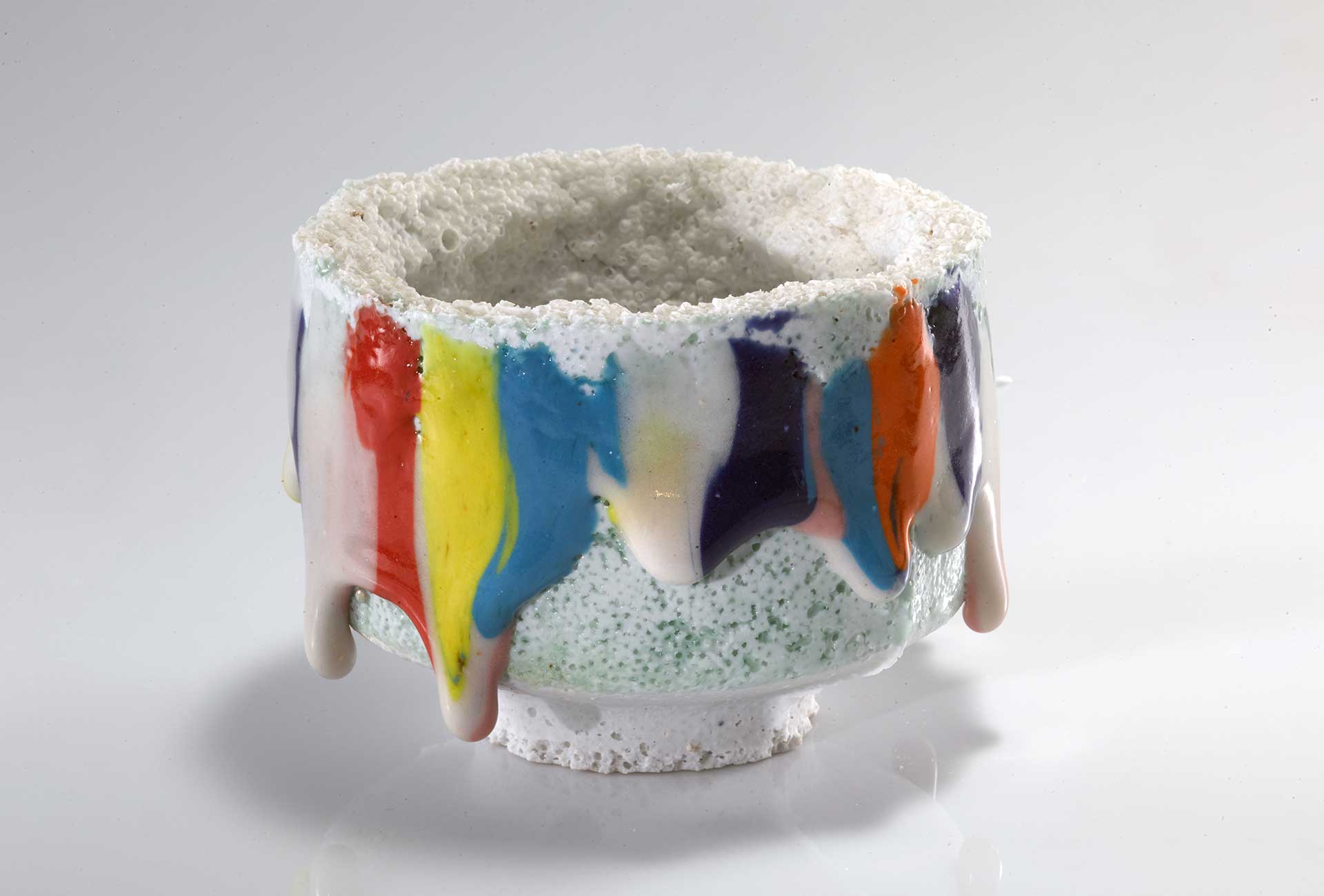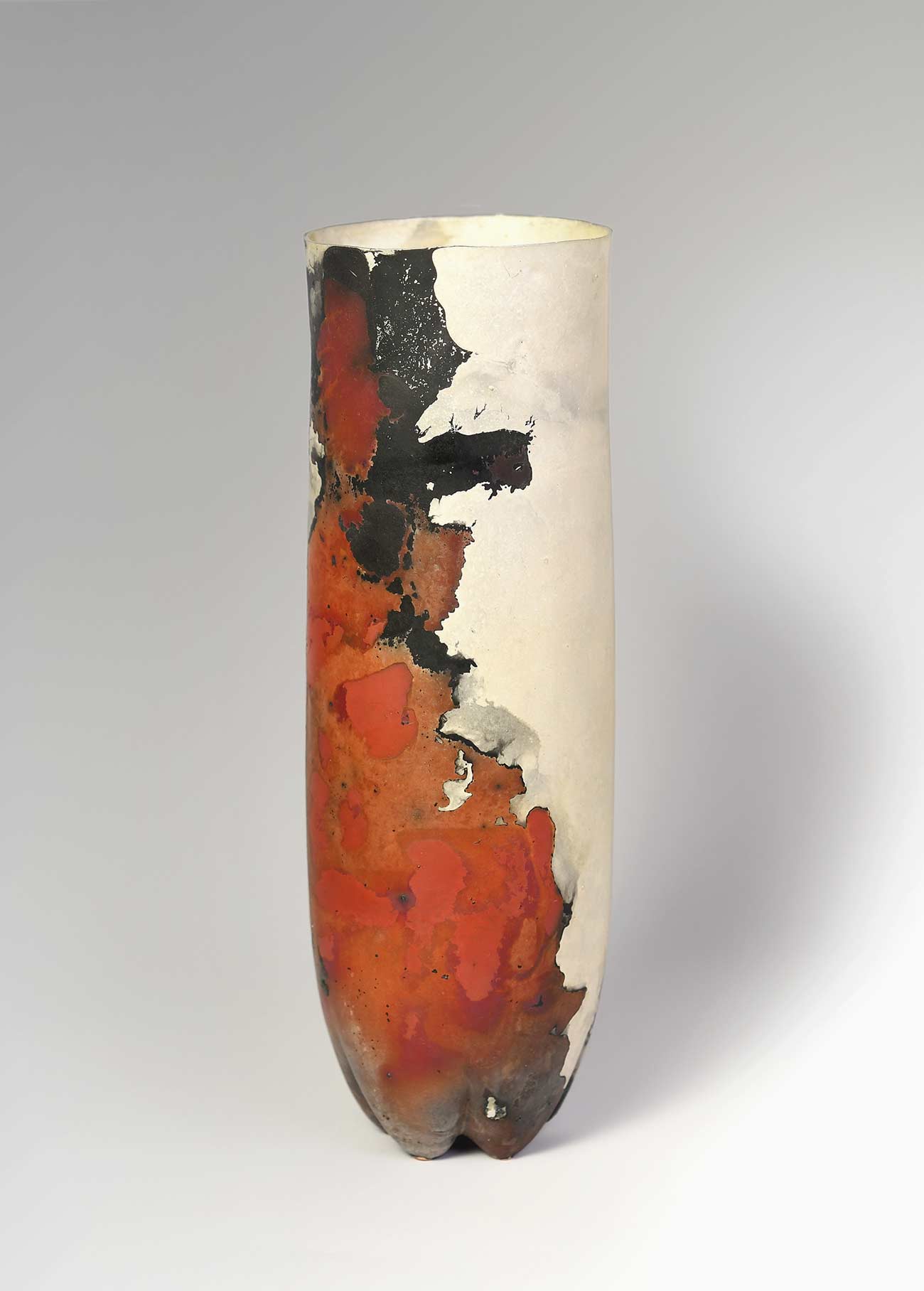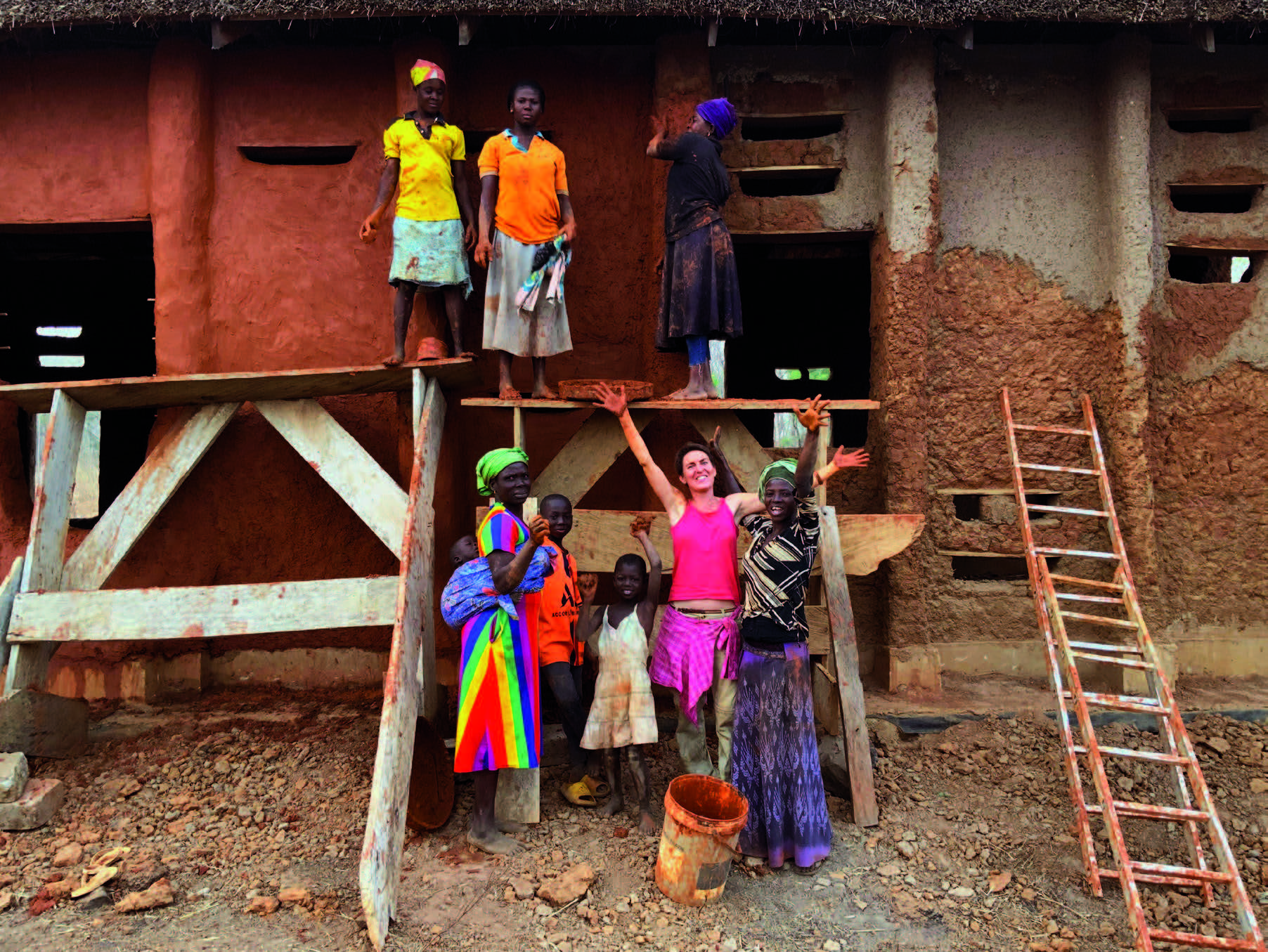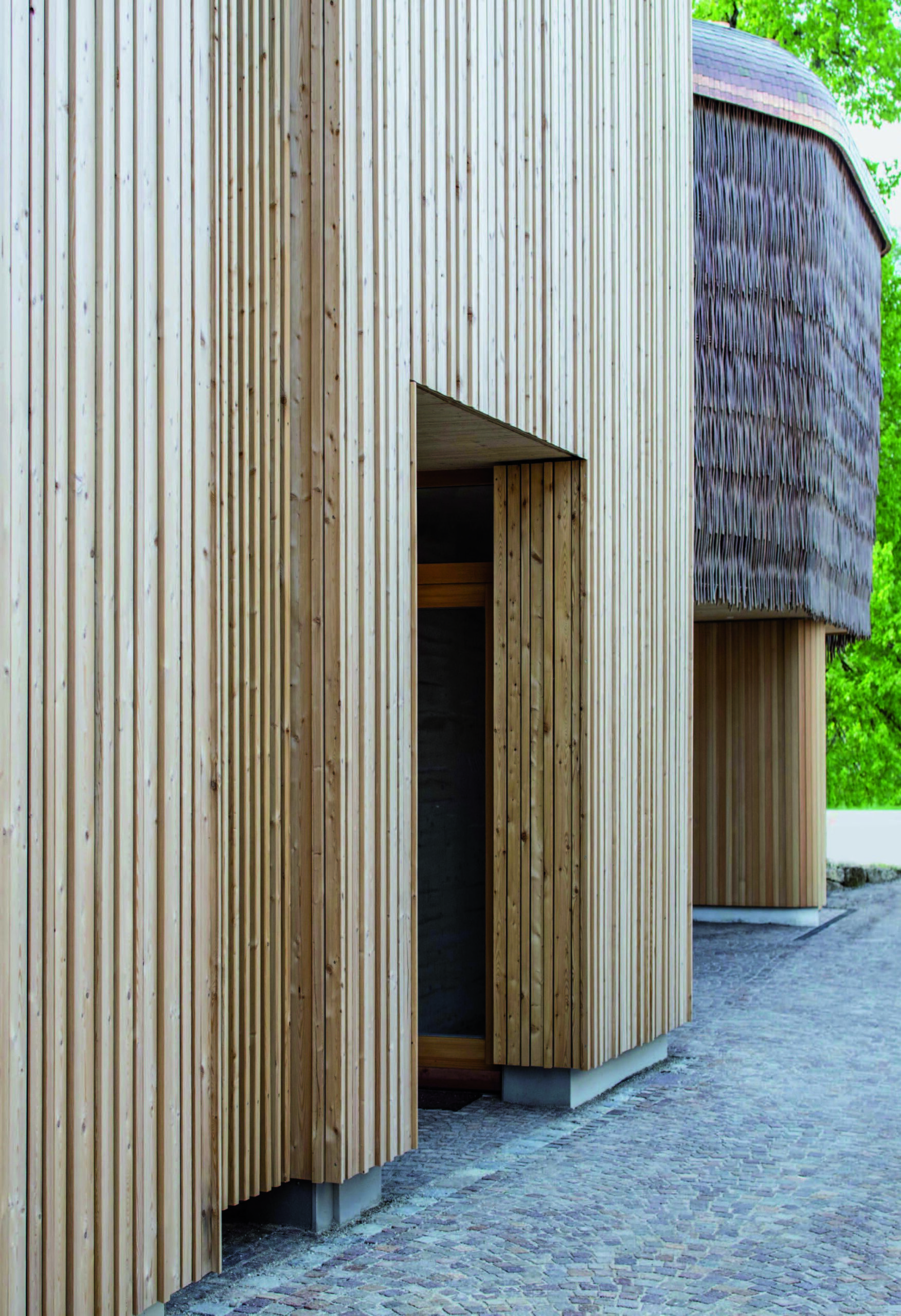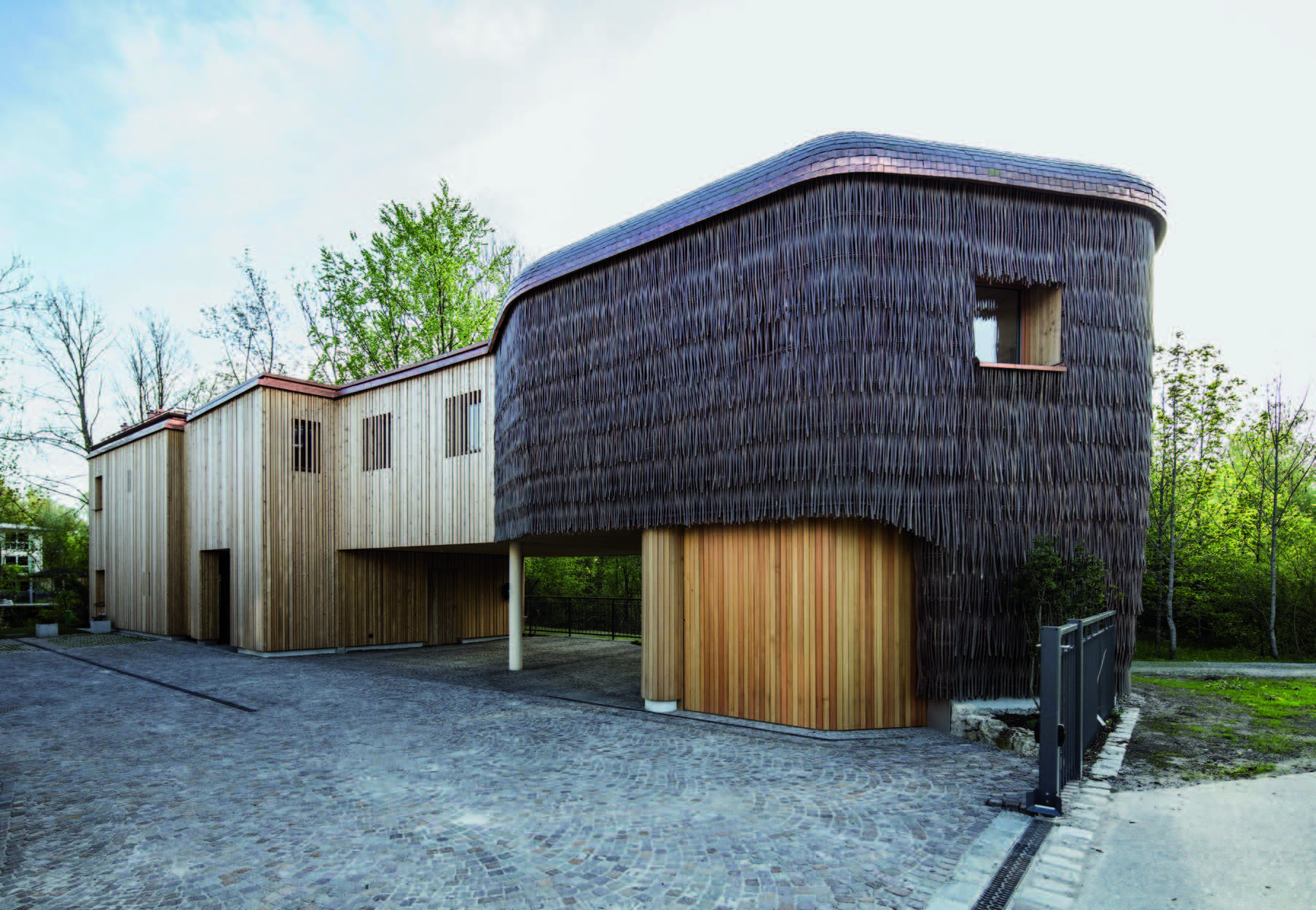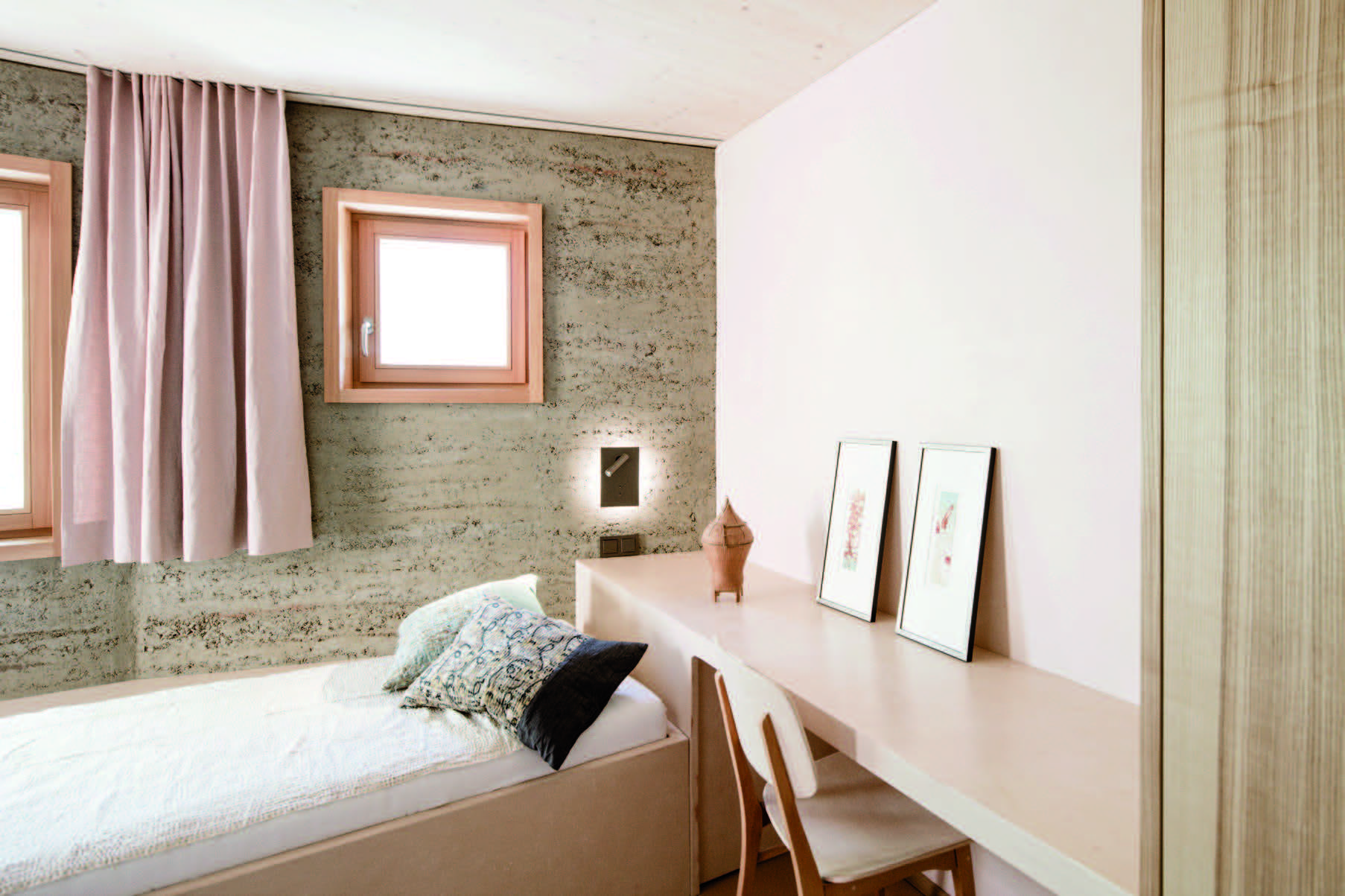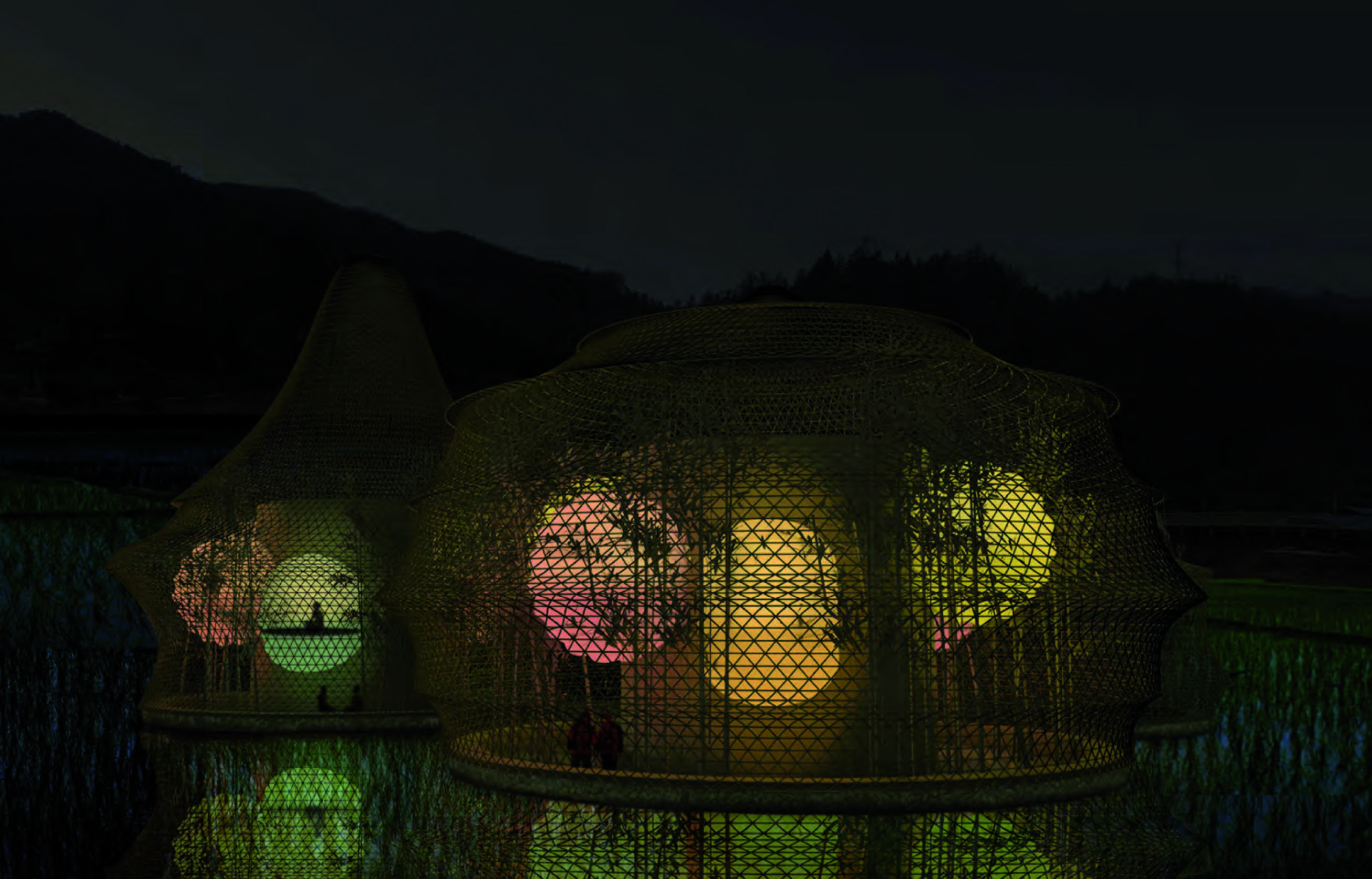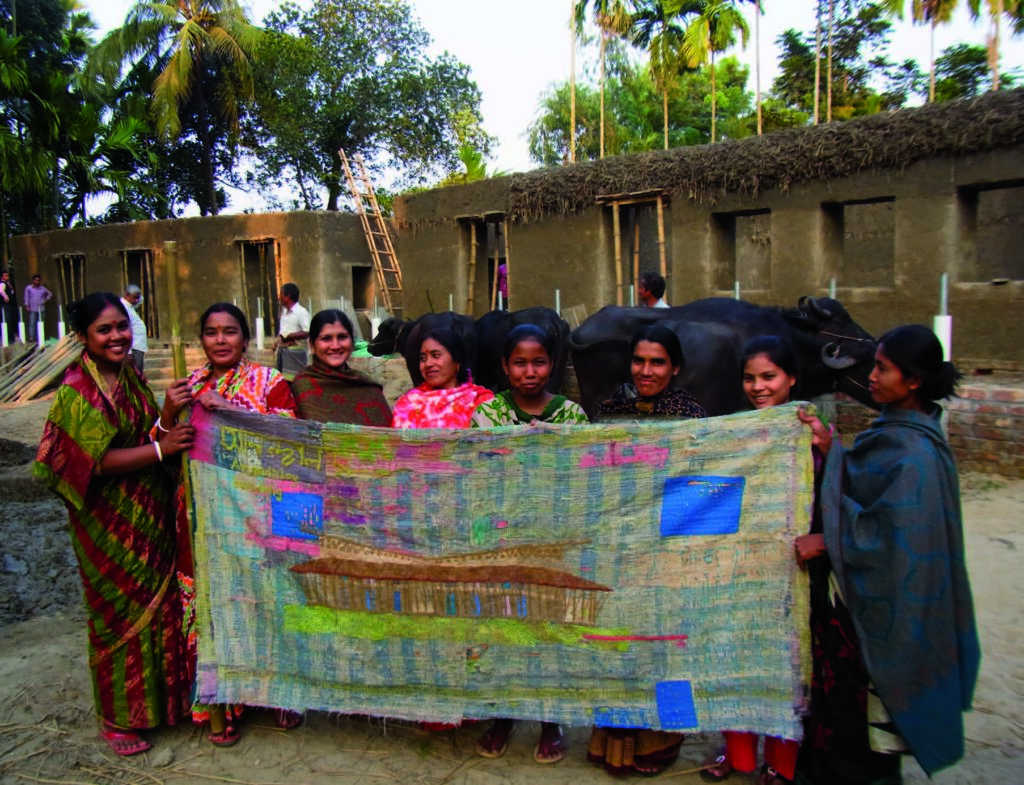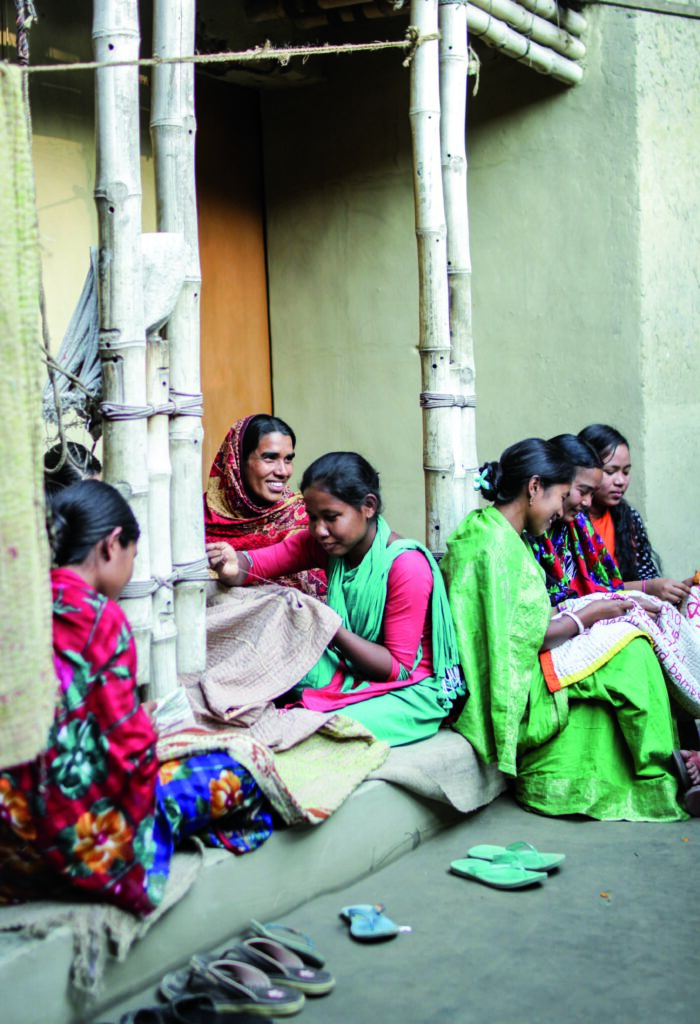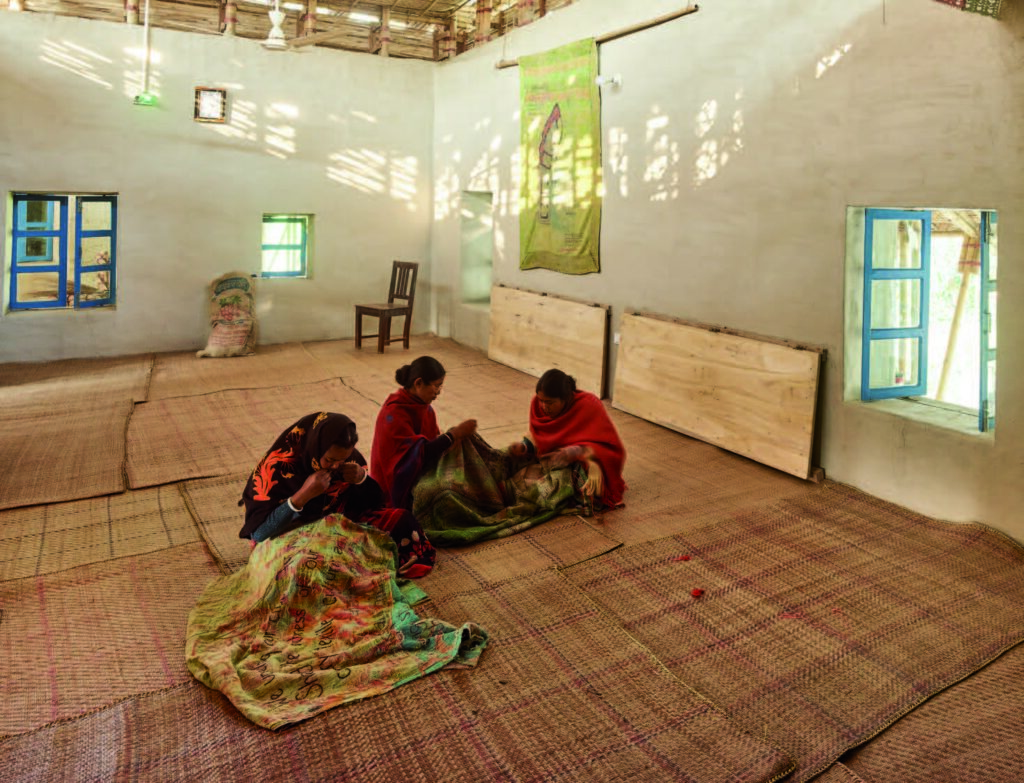Even her office is different. Architectural offices usually highlight minimalism and designer furniture, but Heringer’s studio has the cozy charm of a shared apartment: under a groined vault, chairs and tables from flea markets, rustic furniture, antique Biedermeier pieces and a corner full of boxes. Floorplans in watercolor or embroidered on fabrics adorn the walls. A straw figure of a Hindu deity stands on a shelf – headless. Heringer laughs. “That’s unintentional. I still have to make the head, but there’s some truth in it too because the belly and hands are more important to me.” There is, however, one design classic in the room: an Ingo Maurer lamp with little metal arms into which notes can be inserted. One message says: “Architecture is a tool to improve life,” a motto of Heringer’s studio. Another proclaims: “Qualified to cross when the light is red,” something her father liked to say. “I was brought up to question the rules and to use my common sense.” For her, this also means building with loam, which is sustainable, can be quarried on site and contributes to a healthy indoor climate. Building with clay is inexpensive too – unless you live in Germany.


Adobe construction uses very little fossil energy, but requires more craftsmanship. “Prices for fossil resources are dirt cheap in our economic system, but craftsmanship, i.e. human energy, is often very costly.” The road to loam construction in Germany was a long one for Heringer, who first earned international recognition for her adobe buildings in Asia and Africa. Visiting professorships have taken her to Harvard and Zurich, she has exhibited at the MoMa in New York and at the Architecture Biennale in Venice. She won the prestigious Aga Khan Award for Architecture in 2007, followed by other awards, including the Order of Merit of the Federal Republic of Germany. These honors attract attention and help promote the topic of loam construction.
The St. Michael Campus, an extension to the seminary in Traunstein, is being built on behalf of the Catholic Church. The central clay building with café, seminar rooms and co-working spaces will be Germany’s first load-bearing and outside weathered modern clay building and the region’s first public clay building. Anyone can walk in and experience the atmosphere. There will also be a boarding school erected in timber construction, as well as other parts of the building where concrete has to be used – for cost reasons. “The outdated building code badly needs an overhaul,” says Heringer. Protection against falls is a good example: safeguards are required starting at a height of one meter elsewhere in Germany, but 50 centimeters is the maximum unprotected height in Bavaria. “Are Bavarians twice as clumsy as other Germans?” Regulations are meant to protect people’s safety, but for this architect they sometimes go too far. “New standards are constantly being introduced to provide a bit more safety, but there can never be total safety.” Too many standards make clay construction costly, Heringer explains. The building materials industry developed on the basis of concrete and doesn’t want to change. But people ought to know by now that things cannot continue as they used to. Sand for concrete is growing scarce; fossil fuels are becoming increasingly expensive. It would be logical to build with loam rather than with bricks or concrete, thus avoiding the high emissions from the firing process when cement is manufactured. And clay is very abundant: whether you’re digging a sewer or an underground garage, the excavated material must be disposed of at great expense. “There should be a loam factory in every region to process all the excavated material,” Heringer insists. Wood too is a wonderful raw material for construction. Like clay, wood comes from nature, but clay outperforms wood in terms of sustainability. A tree takes many years to grow, which makes it too precious for solid wood construction. A combined form would be best: “Wood is important for ceilings; loam is good for compressive strength, but not for tensile strength.” Heringer combined both construction methods in the recently completed RoSana guest house in Rosenheim. And wooden shingles completely cover the house where she was born in Hittisau, Austria.


Wo immer es geht, bezieht Anna Heringer die lokale Bevölkerung beim Bau mit ein. Durch den hohen handwerklichen Anteil beim Bauen mit Lehm geht das oft sehr gut. Hier ein Teil des Teams beim Bau des Earth Campus in Ghana. © Studio Anna Heringer. © Studio Anna Heringer.
But the walls in people’s minds can be harder than concrete. Too many people still think that loam is a building material only for developing countries. That’s nonsense, she says: clay buildings could just as easily be built in the center of Munich. “Technically, there’s no reason not to. It’s simply a lack of will.” Even in developing countries, a persistent prejudice insists that clay is a material for poor people who can’t afford fired bricks. “Every organization that comes into a developing country with power and money, whether it’s a governmental, church-based or aid organization, builds with concrete, so the local people think: If you want to be developed, you have to build this way.” That’s why her projects in Germany are so important. If she could tell people in Asia or Africa that she also builds with loam in Germany, the material’s image could change there. Clay buildings can be extremely durable, Heringer explains. A good foundation, erosion-control measures (made of natural materials, of course) on the façade and suitably thick walls: if clay buildings have that, they’re no problem. Multistory clay buildings are also feasible in combination with wood, as is proven by 500-year-old adobe high-rises in the desert city of Shebam in Yemen. Thick walls can be used as niches and retreats. The architect points to the thick entrance wall of her office: “Look at these walls: this is how I grew up.” Heringer comes from the German town of Laufen an der Salzach, which is very close to the Austrian border. She’s an international star, but still has her office here, on Bavaria’s border, within the walls of the old town.
Thicker walls? The mere idea makes profit-oriented investors’ hair stand on end: more wall means fewer square meters of floor space. “But it’s about quality, not quantity,” she counters. It’s better to have a bit less floor space and a truly good building. If real estate prices were calculated according to ecological and health quality rather than quantity, Germany’s inner cities would probably be built only with loam. “We try to avoid toxins in our food, and awareness is growing when it comes to clothing, but what about construction? ‘It smells new,’ people think when they enter a new building. But it doesn’t smell new: it smells toxic.” Harmful chemicals are in the building materials, adhesives and foams, and sometimes even burnt trash is mixed into the concrete itself. All this impacts our health. “Clay buildings offer the healthiest climate for human beings. That’s a fact.”


Loam is not only healthy and environmentally friendly: it’s also beautiful! “Beauty is when something is harmonious toward the planet and the environment, and also in the interest of future generations.” That’s why she works with clay from local deposits and always tries to get the local people involved. This promotes acceptance and a sense of responsibility. She had an altar block in Worms Cathedral made from clay compressed by the parishioners themselves. During the construction of the METI school in Bangladesh, children were also allowed to do light work. “They had a lot of fun. ‘I’m helping to build my own school! I’m strong. I can make a difference.’ It’s important not to feel powerless.” At the St. Michael campus in Traunstein, young people are welcome to design reliefs for the clay walls. Above all, the architect lends a hand: “It’s one thing to plan a building, but it’s entirely different if you’ve helped to build it yourself.”
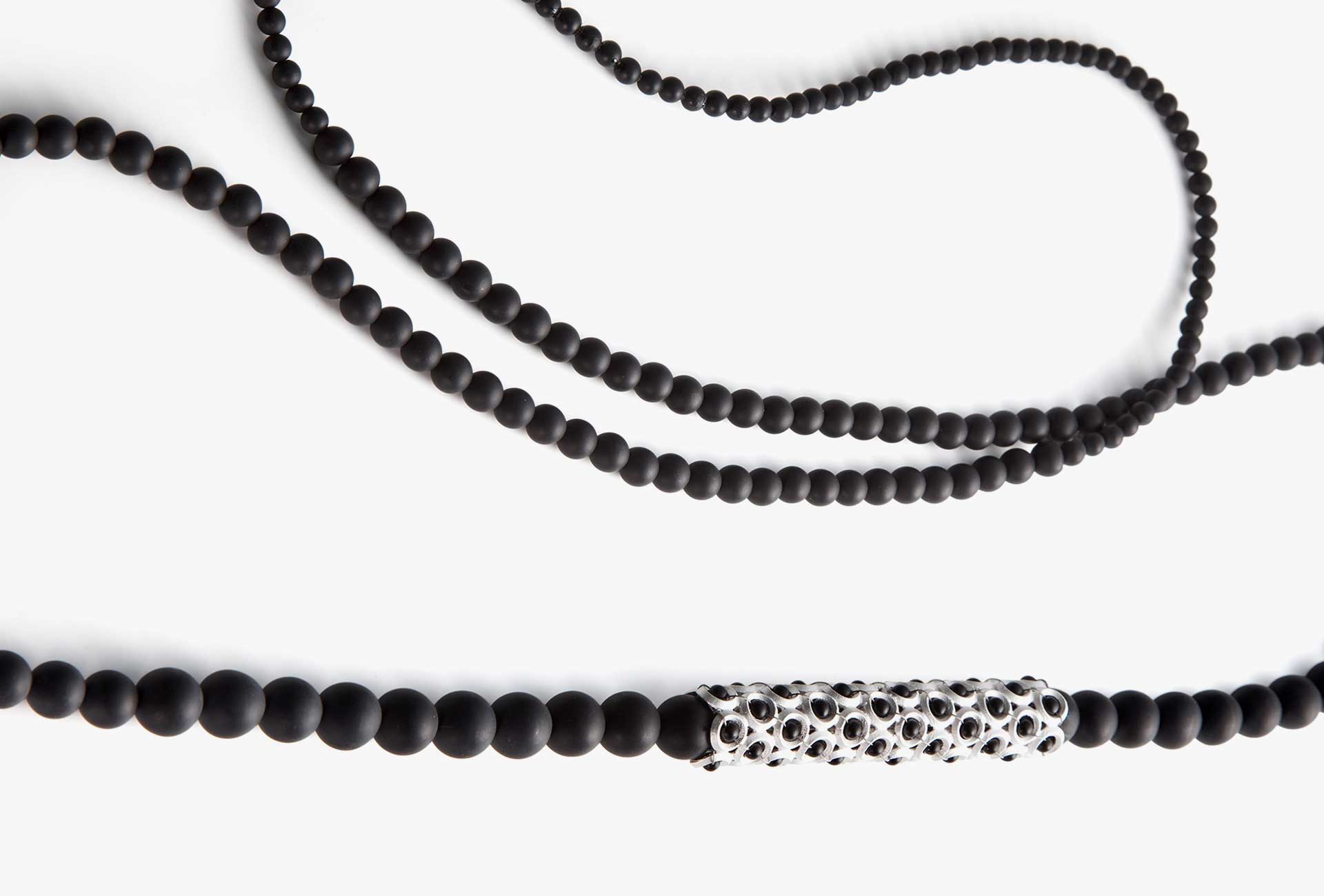
Anna Heringer lives her convictions. She keeps her architectural office small because she wants to have all projects in her own hands. She works with partner offices for larger commissions, for example with the Vorarlberg architect Martin Rauch. She rejects offers to design single-family homes from personal conviction and because she wants to bring loam construction to the public. Single-family homes do not make ecological sense. She lives with her family in an apartment building, in the converted attic directly above her office. She can use geothermal energy here and has solar panels on the roof. Next door she co-initiated a store for sustainable products and local crafts. The shop also sells clothes from Dipdii Textiles, which was established in collaboration with Bangladeshi seamstresses who sew new clothes from discarded sari fabrics, based on the designs of designer Elke Burmeister. Heringer likes to wear these clothes, along with equitably manufactured, fair-traded shoes. She knows how conventional clothing is made and has seen the sewing factories in Bangladesh: “I can’t buy that stuff anymore. If I need something, I always look first to see if I can get it at a flea market. Before I do that, I ask myself whether I really need it.” Heringer was a girl scout and those childhood experiences have had a lasting impact. “Scouting taught me that frugality and do-it-yourself are liberating.” Her solution to the ecological problems of our time is disarmingly simple: “We just need to move toward happy frugality.”

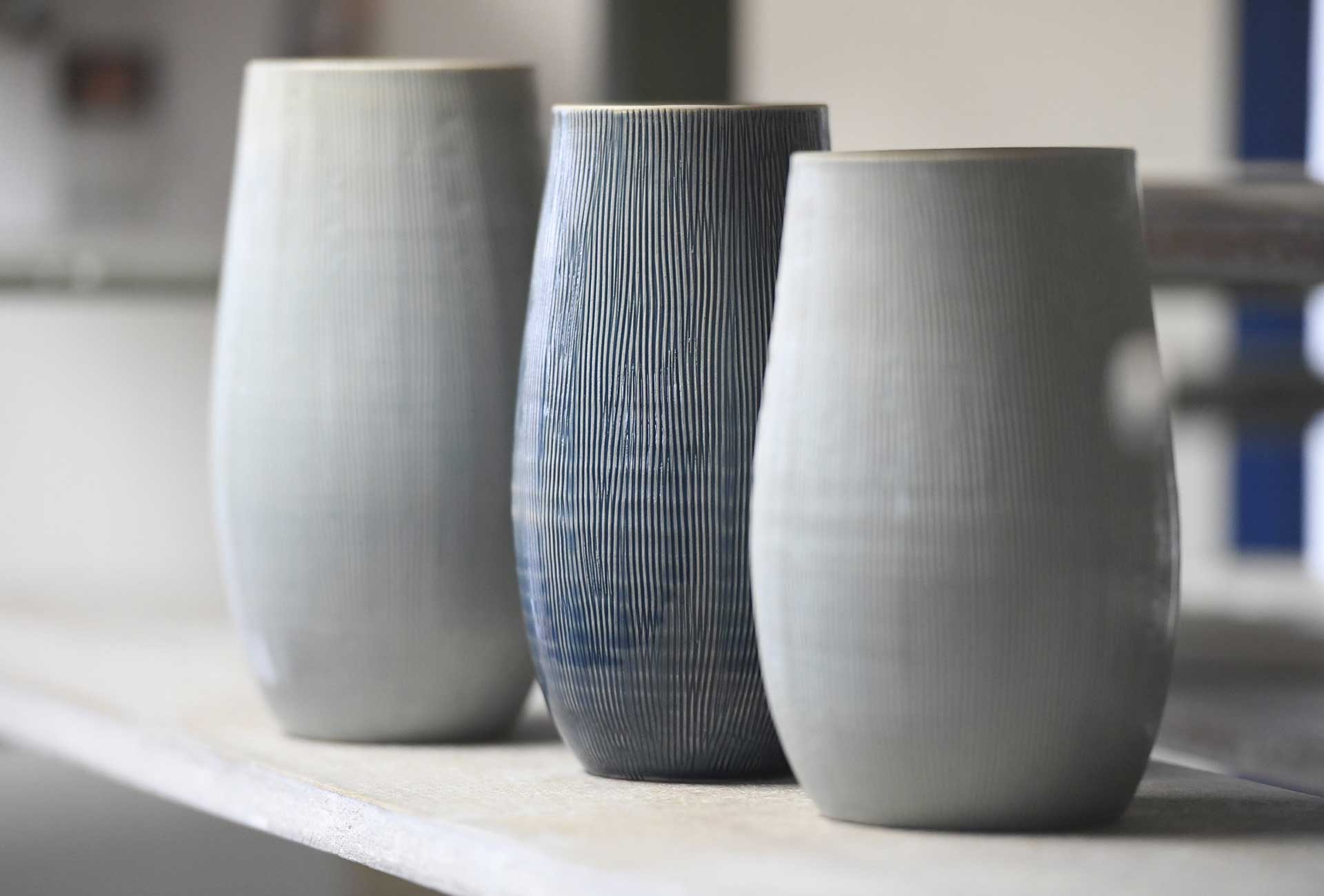
Text: Julie Metzdorf
Photos: © Anna Heringer, p. 22/23 Gabrical.
Wherever possible, Anna Heringer involves the local population in the construction process. Due to the high proportion of craftsmanship involved in building with loam, this often works very well. Here, part of the team building the Earth Campus in Ghana. © Studio Anna Heringer.




